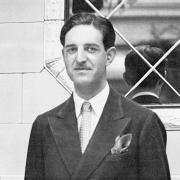Eminem, Vanilla Ice and Ice T have Lancashire to thank for their fame, according to our resident historian Dr Derek J Ripley
If you are under the age of 40 you will no doubt have heard of hip-hop music or rap, as it is sometimes called. It is a genre best described as stylised music that commonly accompanies rapping, a rhythmic and rhyming speech that is chanted. To anyone over the age of 40, it is more commonly referred to as ‘a racket’. Whether you loathe it or merely hate it, there’s no getting away from the fact that hip-hop is a cultural phenomenon.
You could be forgiven for thinking that hip-hop started in New York in the 1970s but nothing could be further from the truth. Because according to my research hip-hop did not originate in New York but in the Deep South - not in the cotton states of the USA but in the Deep South of Lancashire in the cotton towns of Oldham, Bolton and Wigan.
I believe huge US stars such as Eminem, Vanilla Ice, Ice T, Jay Z, and P Diddy owe their celebrity lifestyles and vast fortunes to the Lancashire rappers who founded the genre almost 50 years ago - people like Eminess, Vanilla Slice, Rich T, Jammy B and K Doddy.
The story of how hip hop music started in Lancashire is a fascinating one which some might find hard to believe. But as I have found so often, fiction is frequently stranger than fact.
Hip-hop music actually originated in the mill towns where children were sent out to buy fish and chips on Fridays. They were so euphoric that they were about to eat their favourite meal of the week that they would burst into improvised song as they marched to the chip shop. This became known as ‘chip shop music.’
The official history books would have you believe that the first rap song was ‘Rapper’s Delight’ by The Sugarhill Gang, featuring the lyric:
I said a hip hop,
Hippy to the hippy,
The hip, hip hop, you don’t stop...
I believe this was based on a song by Wigan rappers Mushy P and Chippy T which featured the following lyric:
I said a hip, hop,
Hippy to the chippy
To the hip chip shop, you don’t stop. . .
There is an alternative theory which I find equally plausible. Half a century ago in a small hospital on the outskirts of Wigan the first hip replacement operation was performed in the early 1960s. Nowadays, hip replacement is a routine operation which is performed on thousands of patients every year.
But back in the early 1960s it was a revolutionary procedure and patients were prescribed a rigorous exercise regime designed to stretch, strengthen and stabilise the structures that supported the new hip.
Initially, this was done in the privacy of their own homes but, as the operation became more popular, it wasn’t long before exercise classes were organised in day centres, church halls and community centres. During the power cuts of the early 1970s, participants would improvise lyrics to their favourite songs. This soon became known as ‘hip-op music.’
This soon led to the development of hip-op culture, probably the most important aspect of which was a style of clothing which could best be described as ‘comfy’ - loose fitting and made from synthetic materials (Bri Nylon was a particular favourite) worn with knee length compression or orthopaedic stockings. Loose fitting elasticated high-waisted trousers and baseball caps with the peak worn at the front were particularly popular with men.
Hip-op culture involved drinking copious amounts of tea and splashing out on luxuries such as battenberg cake.
The introduction of cheap transatlantic flights in the 1960s led many hip replacement patients to travel to Florida to recuperate. In this way, the hip-hop style and culture soon mutated across the Atlantic into what we see today.
So there you have it. Whatever the truth, I’m looking forward to a very different kind of rapping - the one that is spelt with a ‘w’ and involves Christmas presents. Merry Christmas to you all.



























